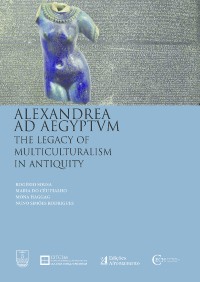Please use this identifier to cite or link to this item:
https://hdl.handle.net/10316.2/36186| DC Field | Value | Language |
|---|---|---|
| dc.contributor.author | Canhão, Telo Ferreira | |
| dc.date.accessioned | 2015-03-27T12:33:43Z | |
| dc.date.accessioned | 2020-09-09T14:04:23Z | - |
| dc.date.available | 2015-03-27T12:33:43Z | |
| dc.date.available | 2020-09-09T14:04:23Z | - |
| dc.date.issued | 2013 | - |
| dc.identifier.isbn | 978-989-26-0966-9 (PDF) | |
| dc.identifier.uri | https://hdl.handle.net/10316.2/36186 | - |
| dc.description.abstract | Since the year 45 B.C., Julius Caesar introduced, in the whole Roman world, the Egyptian calendar with 365 days and six hours i.e. 365, 25, adding the necessary days in the shorter months. It was also intercalated one day between the 23rd and the 24th of February every four years, which was called bissextile because the 6th day before the calends of March counted twice. This day gave the name to the year where it was included but it was not the 29th of February, which did not exist at the time. This calendar became known as the Julian calendar and lasted until the 1st of January 1582 when Pope Gregory VIII made its last modification, implementing what we know as Gregorian calendar, which has been in use till the present day. The adopted Egyptian calendar had a mathematical simplicity; it didn’t require any adjustments by means of intercalary days or months and was used to date every official or officious act, thus justifying Julius Caesar’s statement: «the only intelligent calendar of Mankind’s history». He had for advisor an Egyptian hemerologist, the astronomer Sosigenes from Alexandria, an Egyptian about whom we know little but who managed to impose his ideas about this issue to Julius Caesar not only because they were good but also because they were based on a millennial practice. | eng |
| dc.language.iso | eng | - |
| dc.publisher | Edições Afrontamento | por |
| dc.publisher | CITCEM - Centro de Investigação Transdisciplinar «Cultura, Espaço e Memória» | por |
| dc.publisher | Centro de Estudos Clássicos e Humanísticos | por |
| dc.publisher | Alexandria University | por |
| dc.publisher | Imprensa da Universidade de Coimbra | por |
| dc.relation.ispartof | http://hdl.handle.net/10316.2/36119 | por |
| dc.rights | open access | - |
| dc.title | A Timeless Legacy: the Calendars of Ancient Egypt | por |
| dc.type | bookPart | por |
| uc.publication.firstPage | 283 | - |
| uc.publication.lastPage | 301 | - |
| uc.publication.location | Porto | por |
| dc.identifier.doi | 10.14195/978-989-26-0966-9_20 | - |
| uc.publication.section | Part IV: Tradition in transition | por |
| uc.publication.digCollection | PB | por |
| uc.publication.orderno | 24 | - |
| uc.publication.area | Artes e Humanidades | por |
| uc.publication.bookTitle | Alexandrea ad Aegyptvm: the legacy of multiculturalismo in antiquity | - |
| uc.publication.manifest | https://dl.uc.pt/json/iiif/10316.2/36186/209214/manifest?manifest=/json/iiif/10316.2/36186/209214/manifest | - |
| uc.publication.thumbnail | https://dl.uc.pt/retrieve/11149153 | - |
| uc.publication.parentItemId | 54494 | - |
| uc.itemId | 69876 | - |
| item.grantfulltext | open | - |
| item.fulltext | With Fulltext | - |
| Appears in Collections: | Alexandrea ad Aegyptvm: the legacy of multiculturalismo in antiquity | |
Files in This Item:
| File | Description | Size | Format | |
|---|---|---|---|---|
| alexandreaaegyptum_artigo20.pdf | 2.48 MB | Adobe PDF |  |
Items in DSpace are protected by copyright, with all rights reserved, unless otherwise indicated.
